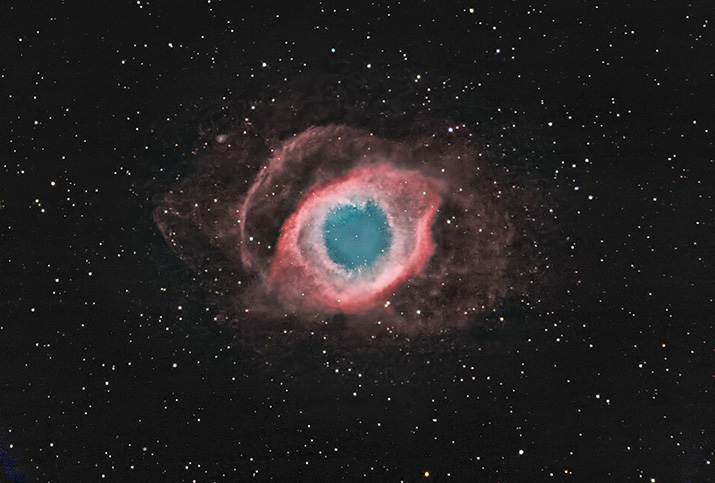
|
Date: Oct. 03, 2013 - Location: Davis Mountains west of Ft. Davis, TX Telescope: - ATRC10 Mount: Paramount-MX - Camera: STL-11000 Exposure: L = Ha - 215 min. (Bin 2X2) - RGB = 20 min each (Bin 3X3) - Image: Ha/R+Ha/G/B Image Credit: Preston Starr and Donald Waid Click on the image below to view at higher resolution. |

|
Discovered by Karl Ludwig Harding, probably before 1824. NGC 7293 is more commonly know as the Helix Nebula. It is a planetary nebula formed by the expulsion of gases from a dying, sun like, star. The nebula lies in the constellation Aquarius at a distance of 690 to 700 light-years making it one of the closest planetary nebulae to the Earth. The Helix resembles the famous Ring Nebula but has a much more complex structure. The composition and structure is the object of recent research conducted using the Hubble Space Telescope and the Cerro Tololo Inter-American Observatory in Chile. This research shows the nebula is actually composed of two separate rings of gas that are approximately perpendicular to each other. How this structure was formed is still not fully understood. One possibility is the presence of a close, yet undetected, companion star orbiting the dying central star. A very faint halo of gases surrounds the brighter nebula. This halo of gas probably was expelled in an earlier, less violent, phase of the central starís life cycle. |